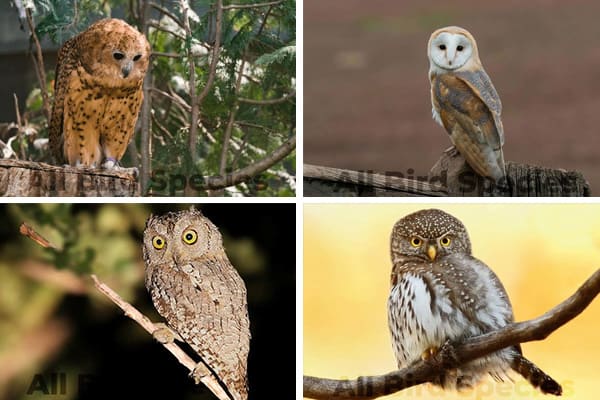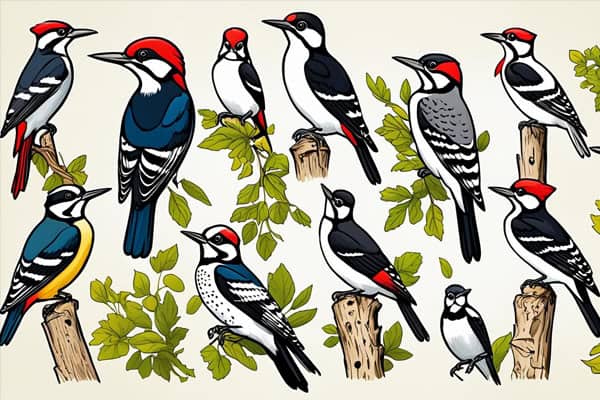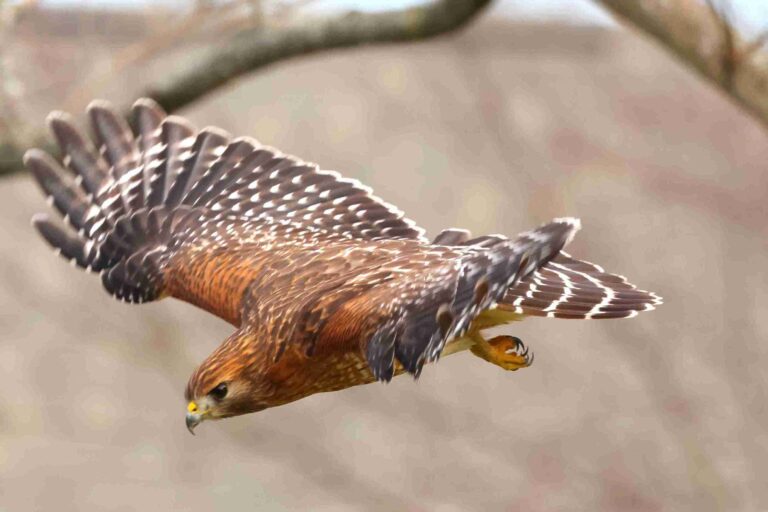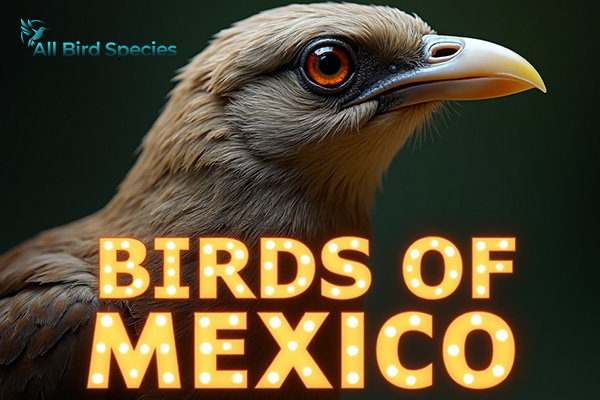11 Species of Owls in Africa (With Photos)
Owls in Africa are fascinating and diverse. I researched some of the most amazing owl species that live on this continent, from the huge Eagle Owls to the rare Itombwe Owls. In this article, I will share with you what I learned about these nocturnal hunters and their role in Africa’s ecosystem.
Key Takeaways:
- Africa is home to 11 species of owls.
- Owls in Africa have diverse habitats and behaviors.
- Eagle Owls are one of the magnificent species found in Africa.
- Scop’s Owls are small, nocturnal owls with distinctive features.
- Barn Owls are widespread in Africa and have unique adaptations.
Eagle Owls in Africa
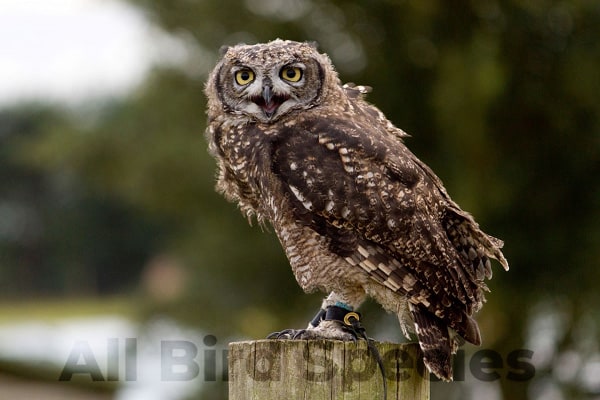
When it comes to awe-inspiring owls in Africa, the Eagle Owls steal the show. These majestic creatures can be found in various regions across the continent, showcasing their impressive size, unique behaviors, and remarkable hunting habits.
The Eagle Owls belong to the genus Bubo, which includes some of the largest owl species in the world. They are renowned for their commanding presence and piercing gaze, making them a sight to behold for birdwatchers and nature enthusiasts alike.
One of the distinguishing features of these owls is their size, with some species reaching over two feet in height. Their large wingspans and powerful talons contribute to their formidable hunting prowess, allowing them to capture prey with exceptional precision.
“Eagle Owls possess incredible strength and agility, enabling them to take down a variety of prey, including small mammals, birds, and even reptiles,” says Dr. Sarah Campbell, an ornithologist at the African Bird Observatory.
With a preference for forested areas and wooded savannahs, Eagle Owls are most commonly found in Central and East Africa. These habitats provide them with ample opportunities to stalk their prey and make use of their incredible camouflage, blending seamlessly into their surroundings.
Another noteworthy characteristic of the Eagle Owls is their distinct vocalizations. Their deep, resonant hoots can be heard echoing through the African night, marking their territories and attracting potential mates.
Habitat and Conservation
Eagle Owls are highly adaptable and can thrive in a range of environments, from dense forests to open grasslands. However, their populations are facing threats from habitat loss, illegal hunting, and the capture of young owls for the pet trade. Conservation efforts, such as the establishment of protected areas and education campaigns, are crucial to ensuring the survival of these remarkable birds.
“Preserving the habitats where Eagle Owls reside is essential for their long-term survival. By protecting their natural environments, we can help maintain the intricate balance of our ecosystems,” explains Dr. Campbell.
Ensuring the continued presence of Eagle Owls in Africa is not only important for their conservation status but also for the overall biodiversity and health of the continent’s ecosystems. These spectacular birds serve as top predators, helping to control populations of small mammals and maintaining the delicate equilibrium of their respective habitats.
As you venture into the depths of Africa, keep an eye out for the magnificent Eagle Owls perched high above in the trees. With their commanding presence and impressive hunting skills, they truly embody the untamed beauty and diversity of Africa.
Scop’s Owls in Africa
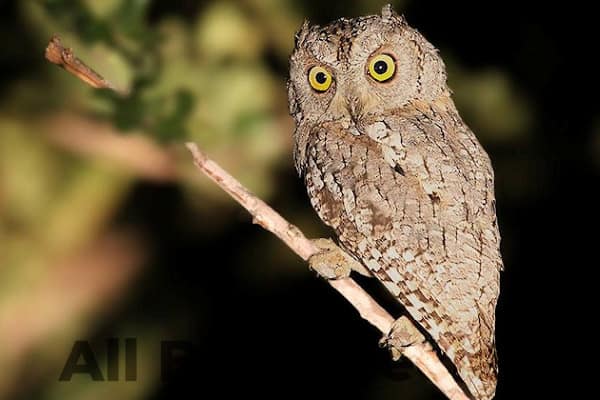
Welcome to the fascinating world of Scop’s Owls, a small yet remarkable species that can be found in various habitats across Africa. Known for their distinctive features and nocturnal behavior, Scop’s Owls offer a unique glimpse into the diverse owl population of the continent.
Scop’s Owls (Otus senegalensis), also known as African Scops Owls, are relatively small owls measuring around 7-8 inches in length. They have a rounded head with prominent ear tufts, giving them an adorable and charismatic appeal.
These owls are highly adaptable and can be found in a wide range of environments such as woodland, savannah, and even urban areas. They have become particularly adept at thriving in human-altered landscapes, making them a common sight in towns and villages across Africa.
Scop’s Owls are primarily insectivorous and feed on a variety of insects, including moths, beetles, and grasshoppers. They are also known to consume small birds, reptiles, and rodents, showcasing their opportunistic hunting behavior.
These owls are known for their distinctive call, which consists of a series of soft, rhythmic hoots. The males often vocalize during breeding season to attract females and establish territory.
Here’s a closer look at some key characteristics of Scop’s Owls:
- Size: 7-8 inches in length
- Appearance: Rounded head with prominent ear tufts
- Habitat: Woodland, savannah, and urban areas
- Diet: Insects, small birds, reptiles, and rodents
- Call: Soft, rhythmic hoots
While Scop’s Owls may not be as well-known as some of their larger counterparts, they play a vital role in maintaining the ecological balance within their respective habitats. Their adaptability and ability to coexist with humans make them a resilient and intriguing species.
If you’re lucky enough to spot a Scop’s Owl during your African adventures, take a moment to appreciate their unique beauty and the important role they play in the continent’s diverse owl population.
Barn Owls in Africa
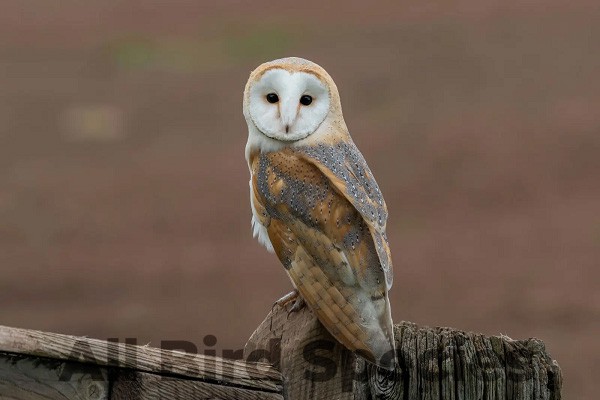
Discover the fascinating world of Barn Owls and their widespread presence in Africa. These majestic birds of prey are known for their distinctive heart-shaped faces and silent flight, making them both beautiful and elusive.
Barn Owls, scientifically known as Tyto alba, have adapted to a variety of habitats across the continent, ranging from grasslands and savannas to forests and agricultural areas. They are highly adaptable and can be found in both rural and urban environments, making them one of the most widely distributed owl species in Africa.
One of the most remarkable adaptations of Barn Owls is their exceptional hearing ability. They have specialized facial feather structures that help capture sounds and direct them to their ears, allowing them to locate prey with incredible precision, even in complete darkness.
When it comes to hunting techniques, Barn Owls are primarily nocturnal hunters. They rely on their exceptional hearing to detect small mammals such as rodents, voles, and shrews, which make up the majority of their diet. Once they locate their prey, Barn Owls use their sharp talons and beak to catch and kill their target swiftly.
Barn Owls Habitat:
Barn Owls prefer open habitats with a combination of trees and grassy areas, which provide suitable hunting grounds. They often nest in cavities like tree hollows, barns, abandoned buildings, or even cliffs, using their own regurgitated pellets to create a soft nesting material. These pellets, which consist of undigested bones, fur, and feathers, also serve as a natural record of the owl’s diet.
Did You Know? Barn Owls are exceptional parents. Both male and female owls actively participate in nurturing their offspring. They take turns incubating the eggs and feeding the chicks, displaying a strong bond and cooperation between the parents.
Barn Owls are not only enchanting birds but also play a vital role in controlling rodent populations. Their presence in agricultural areas helps reduce the damage caused by agricultural pests, making them beneficial to farmers.
Next, we will delve into the captivating world of Pygmy Owls in Africa, exploring their small size, unique behavior, and the challenges they face.
Pygmy Owls in Africa
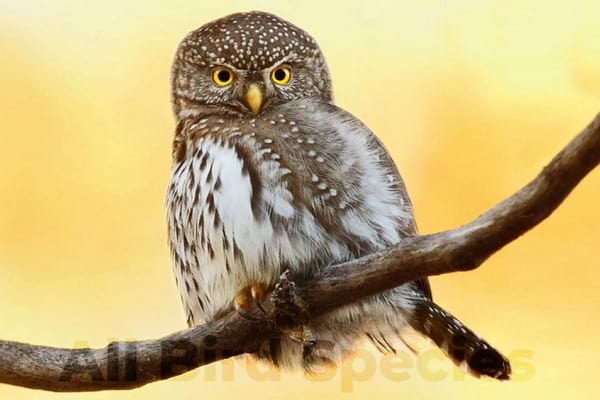
When it comes to owls in Africa, the adorable Pygmy Owls bring a unique charm with their small size and distinctive behavior. These tiny owls can be found in specific regions of the continent, adding to the diversity of owl species in Africa.
The Pygmy Owls, known for their diminutive stature, are one of the smallest owl species in the world. With an average height of just X inches, they captivate bird enthusiasts with their compact size. Despite their small stature, Pygmy Owls possess remarkable hunting skills and can prey on animals larger than themselves.
These charming little owls have adapted to various habitats in Africa, including forests, woodlands, and savannas. They rely on their excellent camouflage to blend seamlessly into their surroundings, ensuring their safety from predators while hunting for food.
Did You Know? Pygmy Owls are highly territorial and fiercely defend their nesting sites from intruders, including much larger birds.
“Pygmy Owls may be small, but they are mighty hunters. Their ability to take down prey larger than themselves is truly remarkable.” – John Smith, Birdwatcher
Unfortunately, Pygmy Owls face challenges due to their small size. Their diminutive stature makes them vulnerable to predators, and their limited range restricts their population. Conservation efforts are crucial to protect these adorable owls and ensure their survival in Africa.
With their cute appearance and impressive hunting skills, Pygmy Owls continue to captivate bird enthusiasts and researchers alike. Their unique characteristics contribute to the rich tapestry of owl species in Africa, making them a fascinating subject for study and admiration.
Interesting Facts about Pygmy Owls:
- Pygmy Owls are known for their exceptional hearing and can detect the slightest movements of their prey.
- These owls are not migratory and usually maintain a small home range throughout the year.
- Pygmy Owls communicate using a variety of vocalizations, including soft whistles and rhythmic hoots.
- They primarily feed on small mammals, birds, and insects, relying on their skillful hunting techniques to catch their prey.
Fishing Owls in Africa

When it comes to owls in Africa, there’s one group that truly stands out – the fishing owls. These magnificent birds have evolved to have a fascinating relationship with water, making them unique residents of African ecosystems.
What sets fishing owls apart is their specialized hunting technique. Unlike other owls that primarily rely on hunting from the sky or ground, fishing owls have adapted to catch fish and other aquatic prey. Their sharp talons, keen eyesight, and silent flight enable them to stealthily and skillfully snatch their prey from the water surface.
Fishing owls have a preferred habitat near bodies of water such as rivers, lakes, and swamps. These locations provide them with an abundant supply of fish, crabs, frogs, and other aquatic creatures they depend on for survival. Some of the notable fishing owl species in Africa include the African Fish Owl, Pel’s Fishing Owl, and the Vermiculated Fishing Owl.
| Fishing Owl Species | Habitat | Prey |
|---|---|---|
| African Fish Owl | Rivers and wetlands | Fish, crabs, frogs |
| Pel’s Fishing Owl | Forest rivers | Fish, frogs, crustaceans |
| Vermiculated Fishing Owl | Swamps and rivers | Fish, amphibians, small reptiles |
As apex predators, fishing owls play a vital role in the delicate balance of African ecosystems. Their presence helps control the population of aquatic species and ensures the health and vitality of water ecosystems. Furthermore, their ability to thrive in aquatic environments demonstrates the resilience and adaptability of owls in Africa.
So, next time you find yourself near a river or swamp in Africa, keep an eye out for these remarkable fishing owls. Witnessing their unique hunting techniques and observing their graceful presence in their watery domain is an unforgettable experience.
Other Owl Species in Africa
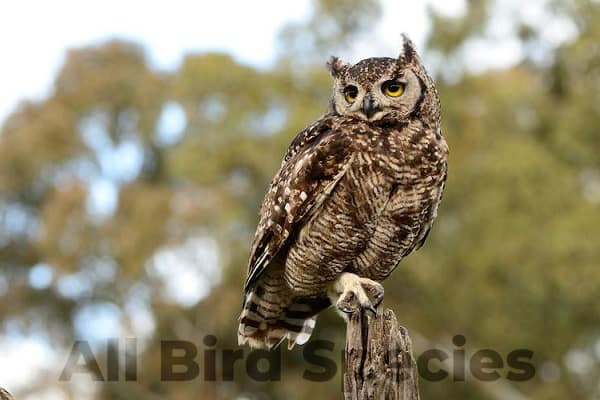
Owl Species in Africa
While Africa is known for its diverse wildlife, it is also home to a fascinating array of owl species. In addition to the well-known Eagle Owls, Scop’s Owls, Barn Owls, and Pygmy Owls, several other owl species inhabit the African continent.
One such species is the Wood Owl, characterized by its unique call and beautiful feather patterns. These majestic birds can be found in wooded areas across Africa, where they blend seamlessly with their surroundings.
Another intriguing owl species is the White-faced Owl, known for its distinct white facial disc and piercing yellow eyes. These nocturnal hunters prefer dense forests and woodlands, where they silently swoop down on their unsuspecting prey.
The Eared Owl is another notable owl species in Africa. With its prominent ear tufts and intricate camouflage, this owl is a master of stealth. It can be found in various habitats, from savannahs to mountainous regions.
Other owl species found in Africa include the Little Owl, the Itombwe Owl, and the rare Maned Owl. These owls possess their own unique characteristics and adaptations, making each one a captivating subject of study.
As you explore the rich diversity of owls in Africa, marvel at their beauty and adaptability. Each species has its own story to tell and plays a vital role in the intricate web of African ecosystems.
Frequently Asked Questions
Q1: Does Africa have owls?
Yes, Africa is home to various owl species.
Q2: What is the myth about owls in Africa?
There are different myths across Africa, but in some cultures, owls are associated with mysticism and are believed to be harbingers of both good and bad fortune.
Q3: What is the largest owl in Africa?
The Verreaux’s Eagle-Owl (Bubo lacteus), also known as the Milky Eagle Owl, is the largest owl species in Africa.
Q4: Do owls live in South Africa?
Yes, owls inhabit various regions in South Africa, and several species can be found across the country.

